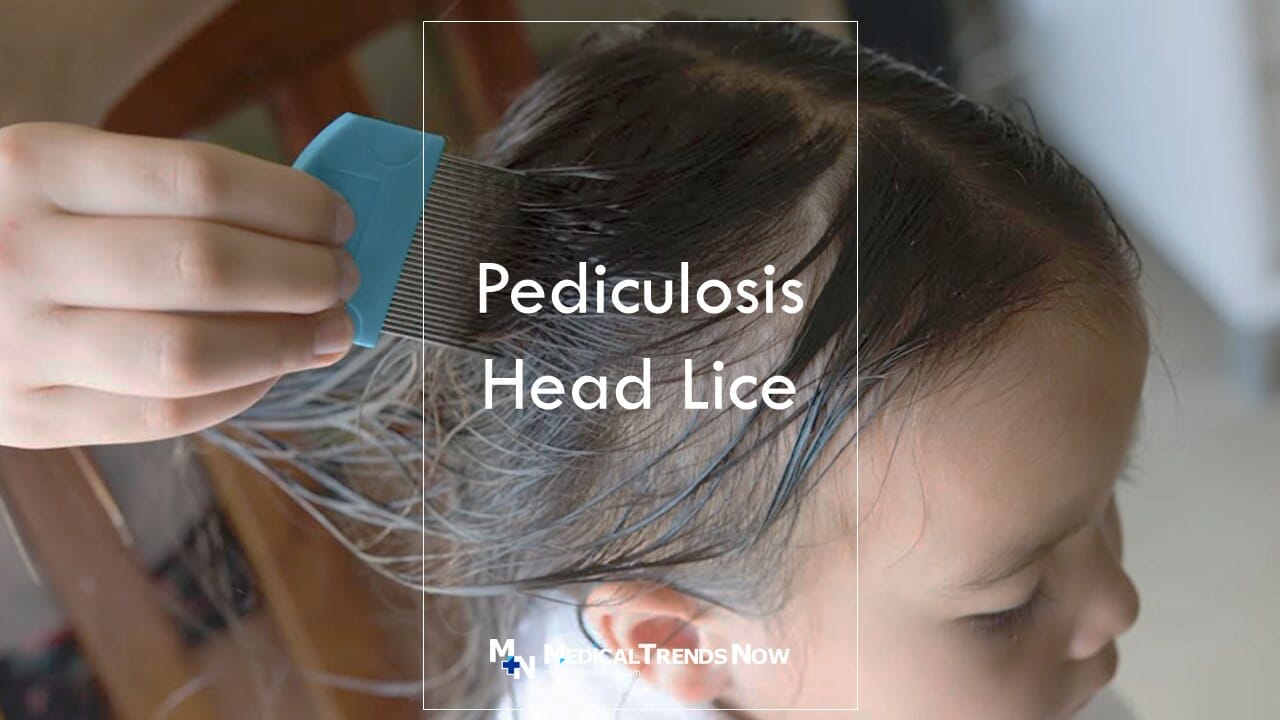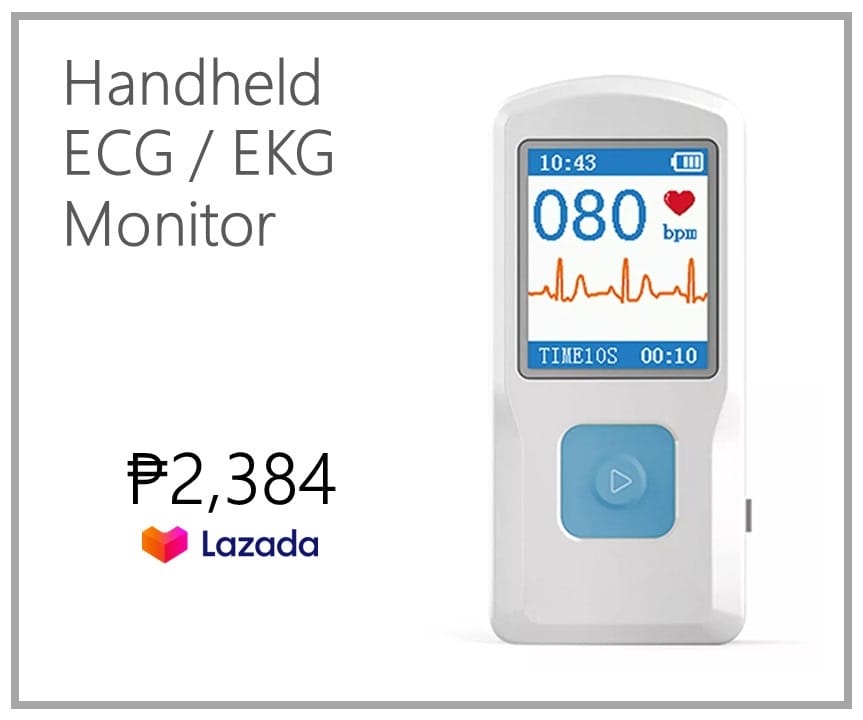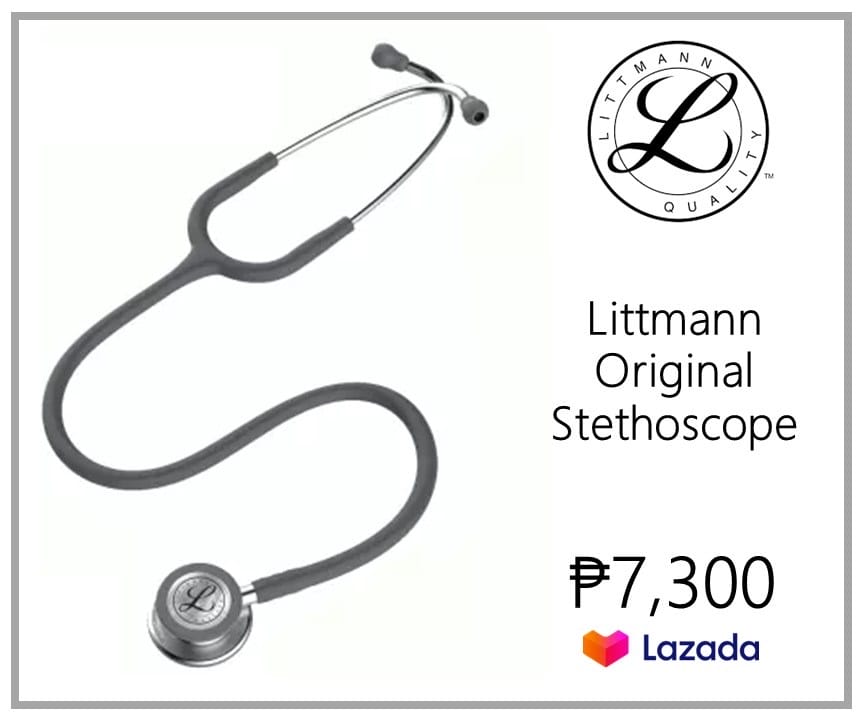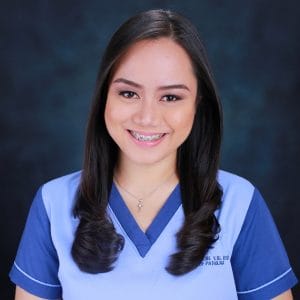Table of Contents
If you’re like most Filipino parents, you’ve probably heard about Pediculosis capitis, commonly known as head lice in the Philippines (or “Kuto” in Tagalog). It can take over your children’s everyday lives due to its irritating effects, especially if they don’t know how to prevent it.
An astounding 54.7% of the population of primary school children in the Philippines are experiencing pediculosis infestation or head lice. This is according to the scientific study and research of the Pediatric Infectious Diseases Society of the Philippines.
Head lice are a common problem for Filipino toddlers. They can be easily treated with over-the-counter products, but it’s important to avoid re-infestation. To prevent head lice, Filipino toddlers should avoid sharing personal items, such as hats and brushes.
Lice are tiny insects that live on the scalps of humans. They are a nuisance and can cause itchiness, but they are not dangerous. Head lice are most common in young Filipino children, and they spread easily from one child to another. If your child has head lice, there are several things you can do to treat the infestation and prevent it from spreading.

One of the most common problems faced by Filipino parents is the presence of head lice in their toddlers, especially when they start to visit school classrooms. Lice are tiny wingless insects that live on the scalp and feed on human blood. They are a nuisance and can be quite difficult to get rid of. In this article, we will discuss how to treat and prevent head lice infestation in Filipino toddlers.
What Is Pediculosis Capitis (Head Lice)?
Pediculosis capitis is a condition caused by the infestation of head lice. It’s most commonly found in Filipino children between the ages of 3 and 5 years old but can also be found in adults. Head lice feed on human blood and can quickly spread through schools, daycare centers, churches, and other places where large groups of people congregate.
Pediculosis capitis has two forms: the more common head lice and body lice. Whatever form it may appear, both types of lice are considered parasitic. It feeds on its host for its living, whereas the host does not benefit and may compromise its health. Both forms of lice manifest the same symptoms and effects on an infected individual.
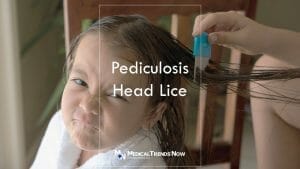
What Causes Pediculosis Capitis (Louse Infestation)?
The more common head lice are caused by the ectoparasite P.h. capitis; whereas the body lice are caused by the ectoparasite Ph. humanus.
Life Cycle
The head louse has three phases in its life cycle: the egg, nymph, and adult.
Egg
A nit is an egg of a head louse. Due to their difficulty in visibility, they are frequently mistaken for hairspray or dandruff. The mature female lays the nits, which are firmly attached to the base of the hair shaft closest to the scalp.
They are round, 0.8 by 0.3 millimeters, and typically yellow to white. About a week is needed for nits to hatch, which ranges from 6 to 9 days. Within 6 mm of the scalp, viable eggs are typically found.
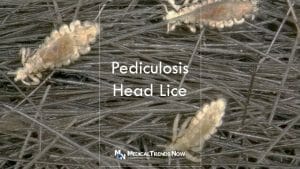
Nymphs
The nymph emerges when the egg hatches. After that, the nit shell becomes more noticeable and turns dull yellow, but it still adheres to the hair shaft. Despite being only a pinhead in size, the nymph has the appearance of an adult head louse.
Nymphs develop into adults who are ready to reproduce roughly seven days after hatching.
Adults
The mature louse is brown to grayish-white in color, about the size of a sesame seed, and has six legs.
The adult louse will be darker in color on people with dark hair. Typically bigger than males, females have a daily nit production capacity of up to eight.
The lifespan of adult head lice is up to 30 days. It must consume blood on a regular basis in order to survive. The louse will die off the host in one to two days if it is not given blood meals.
Body lice
Head lice and body lice share a similar morphology. Body lice, on the other hand, live on infected people’s clothing and bedding, where they lay their eggs, and then migrate to the human body to eat. They have a different life cycles.
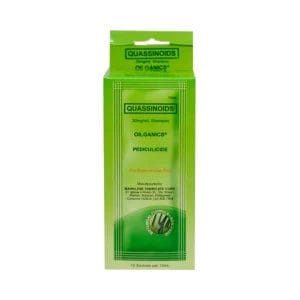
What Are The Symptoms Of Pediculosis Capitis?
Most head lice infestations are asymptomatic. When symptoms are present, they may include irritation, a tickling sensation as if something is moving in the hair, and itching due to an allergic reaction to the saliva of the louse. Other symptoms include:
- Burning sensation in the scalp
- Redness and soreness in the scalp
- Scalp mass or bald patches
- Swelling of the lymph nodes in the neck
- Difficulty wearing hair extensions or wigs
- Recurring skin problems, such as eczema or psoriasis
- Poor school performance
- Difficulty sleeping
- More frequent headaches
- Discomfort

One of the complications could be a secondary bacterial infection. Body lice can act as carriers of the viruses Rickettsia prowazekii (epidemic typhus), Bartonella quintana (trench fever), and Borrelia recurrentis (louse-borne relapsing fever).
If you are experiencing any of the above symptoms, it’s best to see a doctor.
How is Pediculosis Capitis Transmitted?
Less frequently, head lice transmission via flies is possible (more common with body lice). Utilizing infected combs, brushes, towels, or lying on a bed, couch, pillow, carpet, or stuffed toys that have recently been in contact with an infected person can all result in transmission. So can donning clothing, such as hats, scarves, coats, sports uniforms, or hair ribbons, worn by an infected person.
Notably, blood is required for survival by both the nymphal and adult lice types. An adult louse can die in two days if it does not consume a blood meal.

How To Get Rid Of Pediculosis Capitis?
Adopting sound hygiene habits is the best defense against head lice. Utilize a potent pediculicide, wash your hair frequently, and refrain from sharing bedding and clothing.
Being infected with lice or Pediculosis capitis is somehow unavoidable, especially if you are often in public places. However, these are some other ways you can protect yourself from getting infected with these parasites:
- Use an insecticide spray on your head and clothes (wherever lice may be hiding). Be sure to follow the instructions carefully. Keeping your surroundings and linens neat and clean can be a big step in preventing infections brought by parasites.
- Avoid close contact with people who have the condition. Severe infestations are most likely observable, especially in the hair or scalp of an infected individual. Frequent scratching of the scalp can also be an observable sign that that person may be infected with Pediculosis capitis.
- Keep your home clean and free of nooks and crannies where lice can hide.
- Use a nit comb to remove the lice and their eggs from the hair.
- Check your child for head lice every day and remove them if necessary. If a child displays any symptoms of head lice, such as frequent head scratching, redness at the hairline, or dandruff, they should visit a doctor.

Which Doctor Can Treat Pediculosis Capitis?
Filipino General Medicine Doctors and Family Doctors can issue prescriptions for topical or oral medications for lice, especially in severe cases and cases that already manifest secondary infections. Filipino Dermatologists can also be a good option for prescribing topical and/or oral medications.
What are the Available Treatments for Pediculosis capitis?
Getting rid of all the nits (eggs the size of a pinhead) from your hair is the first thing to do if you have been diagnosed with head lice. Prior to conditioning, nit shampoo can get rid of them.
There are a few different treatments that are available for Pediculosis capitis. The most common is a topical treatment applied to the hair. Usually, these topicals are in the form of a shampoo or soap. This medication can be found over the counter or in prescription form. Other treatments that may be prescribed include oral medications and insecticides.
In cases of Filipino children who are infected severely, a Pediatrician should be consulted regarding the treatment plan for any Filipino children you may have in your household. There are over-the-counter medications that need to be used three days a week for a period of twelve weeks. If not, you might need to take a prescription drug.
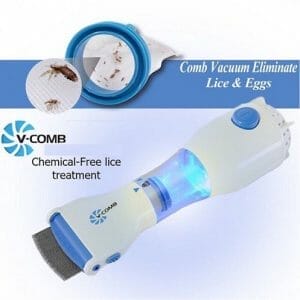
How Can You Tell If Your Child Has Head Lice?
If your child is scratching their head a lot, has sores on their scalp, or if you see small white bugs in their hair, they may have head lice. Head scalp lice are tiny insects that live on the scalp and lay eggs. They are most common in school-age Filipino children and are spread by close contact with someone who has them. If you think your child has head lice, there are some things you can do to check.
Body Lice vs. Head Lice
Body lice are small, wingless insects that live in the seams of clothing and feed on human blood. Head lice are similar insects that live in the hair on the head and also feed on human blood. Both body lice and head lice are parasitic, meaning they rely on humans for food and shelter.
Body lice are typically larger than head lice, and their eggs (called nits) are usually found attached to clothing rather than hair. Head lice eggs are smaller and more difficult to see, and they are usually found close to the scalp. Body lice can cause intense itching and may lead to secondary infections; head scalp lice typically cause less severe symptoms.
Both body lice and head lice can be treated with over-the-counter medications.
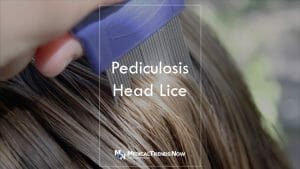
Pubic Lice vs. Head Lice
Pubic lice and head lice are both parasites that feed on human blood. They are different species, but they can both infest the hair on your head.
Pubic lice are usually found in pubic hair, but they can also be found in other body hair, such as facial hair, armpit hair, and chest hair. Head scalp lice are found exclusively in head hair.
Pubic lice are larger than hair lice, and their eggs (nits) are larger as well. Head lice nits are smaller and more difficult to see.
Both pubic lice and hair lice cause itching and irritation. However, pubic lice can also cause a rash on the skin around the genitals.
Lice and Scabies
Head lice and scabies are both parasitic infections that can be extremely uncomfortable and inconvenient. Head scalp lice are tiny insects that feed on human blood and live in the hair, while scabies is a mite that burrows under the skin to lay their eggs. Both head lice and scabies are highly contagious and can be passed easily from person to person.
Treating head lice usually involves using a special shampoo or cream that kills the lice, while scabies is treated with a prescription cream or lotion. Prevention is the best defense against both head lice and scabies, so it’s important to avoid sharing personal items like hats, brushes, or towels with others. If you think you may have either hair lice or scabies, it’s important to see a doctor right away for treatment.
How To Treat Head Lice Infestation In Filipino Toddlers?
It is estimated that 54.7% of the population of primary school children in the Philippines (66.5% versus 42.3% in males), according to the study of the Pediatric Infectious Diseases Society of the Philippines. Head lice are most commonly found in Filipino children between the ages of 3 and 10 years old.
There are several ways to treat hair lice infestation in Filipino toddlers. One popular method is to use a lice comb. This is a fine-toothed comb that can be used to remove lice eggs (nits) from the hair shaft. Another common treatment is to use over-the-counter (OTC) lice shampoo. These shampoos contain chemicals that kill lice and their eggs.
If you suspect that your child has hair lice, it is important to seek treatment right away.
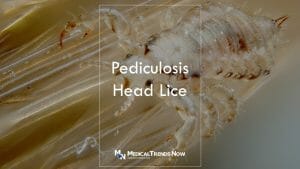
How To Prevent Head Lice Infestation In Filipino Toddlers?
Preventing head lice infestation in Filipino toddlers can be done by following a few simple steps.
First, Filipino parents should avoid sharing personal items with their children, such as hats, combs, and brushes.
Second, Filipino parents should keep their child’s hair clean and free of tangles.
Third, parents in the Philippines should check their child’s head for lice regularly and remove them immediately if found. By following these simple steps, parents can help prevent hair lice infestation in their Filipino toddlers.
Takeaway: Head Lice in Filipino Toddlers – How To Treat and Prevent Pediculosis Infestation
Head lice are an annoying but common problem. Following these tips will help to reduce the symptoms and prevent them from taking over your children’s life. In this article, we have discussed the symptoms of pediculosis capitis and how to get rid of pediculosis infestation. By following these steps, you can protect your children from hair lice.
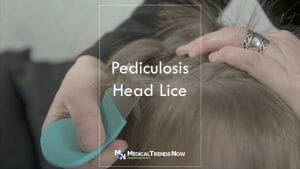
Resources: Head Lice in Filipino Toddlers – How To Treat and Prevent Pediculosis Infestation
- Efficacy of Citronella Shampoo for Head Lice – Pediatric Infectious Diseases Society of the Philippines Journal
- 2015 – Pediatric Infectious Disease Society of the Philippines
- Safety, Efficacy, and Physicochemical Characterization of Tinospora crispa Ointment: A Community-Based Formulation against Pediculus humanus capitis – National Library of Medicine
- A survey of lice infestation among day care pupil in selected day care centers in Subangdaku, Mandaue City: Basis for awareness – Kalakoti Sowmya, Janardhan Prodhutoori, Akhil Babu Thummalapenta, Arunasree Tirumalasetty, Priyanka Yanamadala, Maricel B. Flores: College of Arts and Sciences – Biology Department – Cebu Doctors’ University
- Lice – Treatment – CDC
- lice – Diagnosis and treatment – Mayo Clinic
- Treatment of Pediculosis Capitis – PMC – NCBI
- Pediculosis and Scabies: A Treatment Update – American Academy of Family Physicians AAFP
- Pediculosis (lice, head lice, body lice, pubic lice, cooties, crabs) – Department of Health New York
- Treating lice – Australian Prescriber – NPS MedicineWise
- Lice: Diagnosis and treatment – American Academy of Dermatology Association AAD
- Lice: Overview, Treatment Options and Prevention – Nationwide Children’s Hospital
Disclaimer: Head Lice in Filipino Toddlers – How To Treat and Prevent Pediculosis Infestation
This website is intended to educate both members of the general public and those working in the medical field on the prevalence, causes, and methods for preventing, diagnosing, and treating diseases that affect people throughout their lives. This website’s content is provided solely for informational reasons and is not meant to serve as a substitute for the advice of a qualified medical practitioner.

